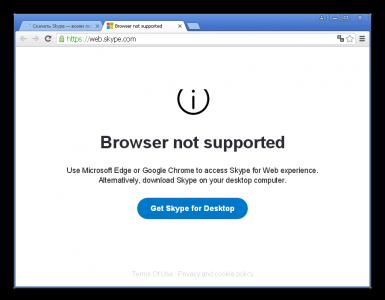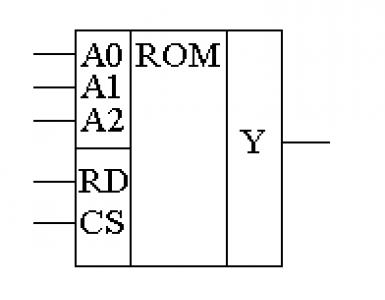How to make a different download folder. How to change the location of default user folders in Windows. Video - How to change the location where downloaded files are saved
We often download files through the browser. These can be photographs, audio recordings, videos, text documents and other types of files. All of them are saved to the "Downloads" folder by default, but you can always change the path for downloading files.
How to change the download folder in Yandex Browser?
To ensure that downloaded files do not end up in a standard folder, and you do not have to manually specify the desired location each time, you can set the desired path in the browser settings. In order to change the download folder in the Yandex browser, do the following. Go to " Menu" and select " Settings»:

At the bottom of the page, click on the button " Show advanced settings»:

In the block " Downloaded files» click on the button « Change»:

A file explorer will open, with which you can select the save location you need:

You can select either the main local drive C or any other connected drive.
You can also check or uncheck the box next to “ Always ask where to save files" If the checkbox is checked, then before each save the browser will ask where in the system to save the files. And if there is no checkmark, then the downloaded files will always end up in the folder you chose.
Assigning a location for downloaded files is very simple, and is especially convenient for those users who use long and complex save paths, as well as other local drives.
When downloading files from the Internet, the browser saves them to the created folder by default. Each user, if necessary, can set individual parameters for saving downloaded files, designating the required folder for their placement.
You will need
- Computer, Internet access, browser.
Instructions
Instructions
I'll start from afar. The best option for installing Windows is to initially divide it into several logical drives (most often there are 2). In one of which the system is installed, and in the others everything you need (movies, music, images, etc.). And the correct thing to do would be to “give” a maximum of 100 GB to the system, and divide the rest or leave it on another disk. The wrong ways would be: leave about 30 GB for the system and not split the hard drive, but “push” everything into one. After this, the system will need to be constantly cleaned and it will be difficult to determine what is where.
For example, on my 500 GB laptop the hard drive is divided into 100 and 400 GB, respectively, for the OS and my needs. This is approximately of course, because The structure of hard drives will not allow for even division. And even if you buy an 8 GB flash drive, you will get something like 7.5 GB. But that's another story. You get the point.
But even if your hard drive is divided correctly (at least 70GB is allocated for Windows), then sooner or later the time will come when there is not enough space and Windows will “ask” you to delete the excess. When this happens to me with a local disk where I have my data, the toad strangles me in order to delete something from films or installer programs. You have to contrive and either delete it, or transfer it to disks, or to a portable hard drive in order to at least somehow preserve what was there (you know the habit). I don't think I'm the only one who has this problem.
But if this happens to the disk where the system is installed, then it’s even worse (at least for me). Here you feel sorry for the installed programs and you need to decide which ones to “sacrifice” in order to save space.
You can, of course, clean what you have using utilities. Clear all garbage in the form of temporary files and folders, the recycle bin, the registry and everything else you can. But sometimes this is not enough and not much space is freed up, but it is enough for the first time.
Now closer to the essence of the article.
For those who don't know, I'll explain. If you think that what you are “throwing” on the desktop, delete files and folders in the trash, save files in My Documents, Music, Downloads, etc. then nothing happens to the space on your system disk - you are deeply mistaken. The desktop is not a separate disk. This is just a “shortcut” indicating a location on your system disk. Therefore, when you load all these places, you are loading your disk on which the operating system is installed.
In this article, I will look at a couple of ways to ensure that such inconspicuous folders as Programs and Profiles are on another drive. Why is this method good? Yes, you can independently choose a folder to save your installed programs and games (moreover, 90% of them ask you to indicate the folder where they will be installed, and the remaining 10% are installed without asking), for downloading music, pictures and other things. But very often it happens that when installing, users simply click on the button Further without even thinking about what is written there (well, and along the way they install other programs from the developer or toolbars in the browser or something else) and in the end everything is installed on the system drive. If someone thinks that this is what is needed - that games and programs should be installed in the Program Files folder, otherwise the computer will die and the program will not work, then I will refute these thoughts. It is no coincidence that programs ask where to install them. To put it simply, they don’t care where the files are located, the main thing is that the path to them is indicated in the system files and registry.
It’s the same with profiles - often you simply don’t think about the fact that there is a folder with movies on your desktop or download files from the Internet to the Downloads folder. Meanwhile, this loads the disk.
And after the OS writes to you that there is not enough space, you begin to delete programs and games (sometimes necessary), sacrificing them for the sake of space. Or you could just look at the desktop or folders with music, pictures, downloads and other things.
That’s why I’ll show you how to make the default installation of programs and games on another drive, as well as profiles (which, by the way, sometimes also accumulate a lot of garbage in the form of temporary files of various utilities). Having done this once, it will remain until the system is reinstalled.
How to change the default installation path for programs and games to another drive?
Then copy from C:\Users (C:\Users) Public folder in D:\Users.
Go to the Registry Editor (how to do this is described above) and go to the branch HKEY_LOCAL_MACHINE\SOFTWARE\MICROSOFT\WINDOWS NT\CurrentVersion\ProfileList. In it you need to change the files Default, Profile Directory and Public

change the value of %SystemDrive% to D:. It should look like this:

Reboot and see if it worked.
I welcome you to mine!
By default, browsers save the files you download on the system drive. This means that you will fill the system disk with music and movies. To prevent this from happening, you need change the download folder in the browser.
This is not at all difficult to do; you only need to set up your browser once and your computer will be in order. All files that you download through the browser will be in place.
I will tell you how to change the path for downloading your files in the browser using the example of the three most popular browsers: Mozilla Firefox, Chrome and Opera. In the browser from Yandex, the settings are the same as in Chrome from Google.
How to change the download folder in Mozilla Firefox.
In order to change the directory for downloading files in the Mozilla Firefox browser, go to the menu:
“Tools – Settings”


We mark the radio button “Path to save files”, and by clicking the “Browse” button we select the directory where we will store our files.
How to change the download folder in the Chrome browser.
In order to change the file download directory in the Chrome browser, go to the settings and browser management window. Then select “Settings” from the menu.


In the download section, change the location of the downloaded files.

Chrome browser will now download files to the directory you specified.
How to change the download folder in the Opera browser
In order to change the folder for downloading our files in the Opera browser, you need to go to the browser settings:
“Settings – General settings”

Then, on the “Advanced” tab, go to the “Downloads” section.

Change the line “Save downloaded files in:”
If you have several browsers, then it is advisable to specify one directory for storing files. This way you don't have to run through different directories to find what you downloaded.
Well, the system disk will not be filled with various garbage, because files from the Internet have absolutely nothing to do on the system disk.
If you have several web browsers, there is nothing wrong with this, but you can only make one the default browser. You can find out how to do this from my .
Good luck!
: documents, photo and video files. Just click on the download link and the file is saved somewhere. And often we don’t notice where exactly it is located after that, which causes a long and painful search for its location. Let's look at how to find and change the downloads folder in Windows.
To solve this problem, you can use the settings of the Internet viewer you are using. But this does not always work; for example, in Windows 10, the Microsoft Edge browser does not require such changes. Therefore, we will also describe options for changing the parameter directly in the system.
The instructions on how to change the download folder in Yandex Browser are quite simple:

Now all files will be downloaded to the selected location. To find them, you can follow the path in Explorer or you can open it in the program itself: in the download menu next to the file, click “Show”.
Google Chrome
In Chrome, the change algorithm is practically the same:

Similar to Yandex, here you can open the save location using the “Show” item next to the downloaded file in the download list.
Internet Explorer
If you are one of the rare number of people who still use Internet Explorer, here are instructions on how to change where you save your downloads:

Now all files will be saved here. There is another universal way to change for all users - this is directly through the system settings.
Changing, moving and restoring a directory in Windows
If you use different programs for surfing the Internet, then it is easier to simply change the location of the system folder where the default download occurs. This need arises when the system disk is full, and you download large amounts of information from the network, which leads to freezes and slowdowns in work. First you need to know how you can find this folder on any Windows computer:
- In the Explorer window on the left in the menu next to the “Desktop” and “Favorites” items there will be a “Downloads” directory with a blue arrow.
- You can go to the system drive (usually drive C), go to Users, then click on the icon with your user name and open “Downloads”.
This directory is a system directory, so changing settings is not so easy. There is no way to simply change the folder in the system intended for downloads. But you can move it:

Restoring the previous state is possible in a similar way. Just point to the previous path.
It happens that users accidentally delete this directory, or it may disappear on its own, for example, when the computer is infected with a virus. In this case, the first thing you should do is scan your computer with an antivirus and neutralize the threats.
Let's look at how to restore the save location on the system if this folder suddenly disappears, and each browser places downloads in different places at its discretion.
- Go to “Start” and select “Run”.
- Bring up the command prompt by typing cmd and clicking Enter.
- Enter the following entry on the command line:
attrib –s –h C:\users\user\downloads
where “user” is the name of your specific computer user.
After this, the system should restore the folder.
We looked at how you can open the system folder for downloads, change its location, how to change the default folder where the Yandex browser downloads, and some others. All this is necessary for convenience and













